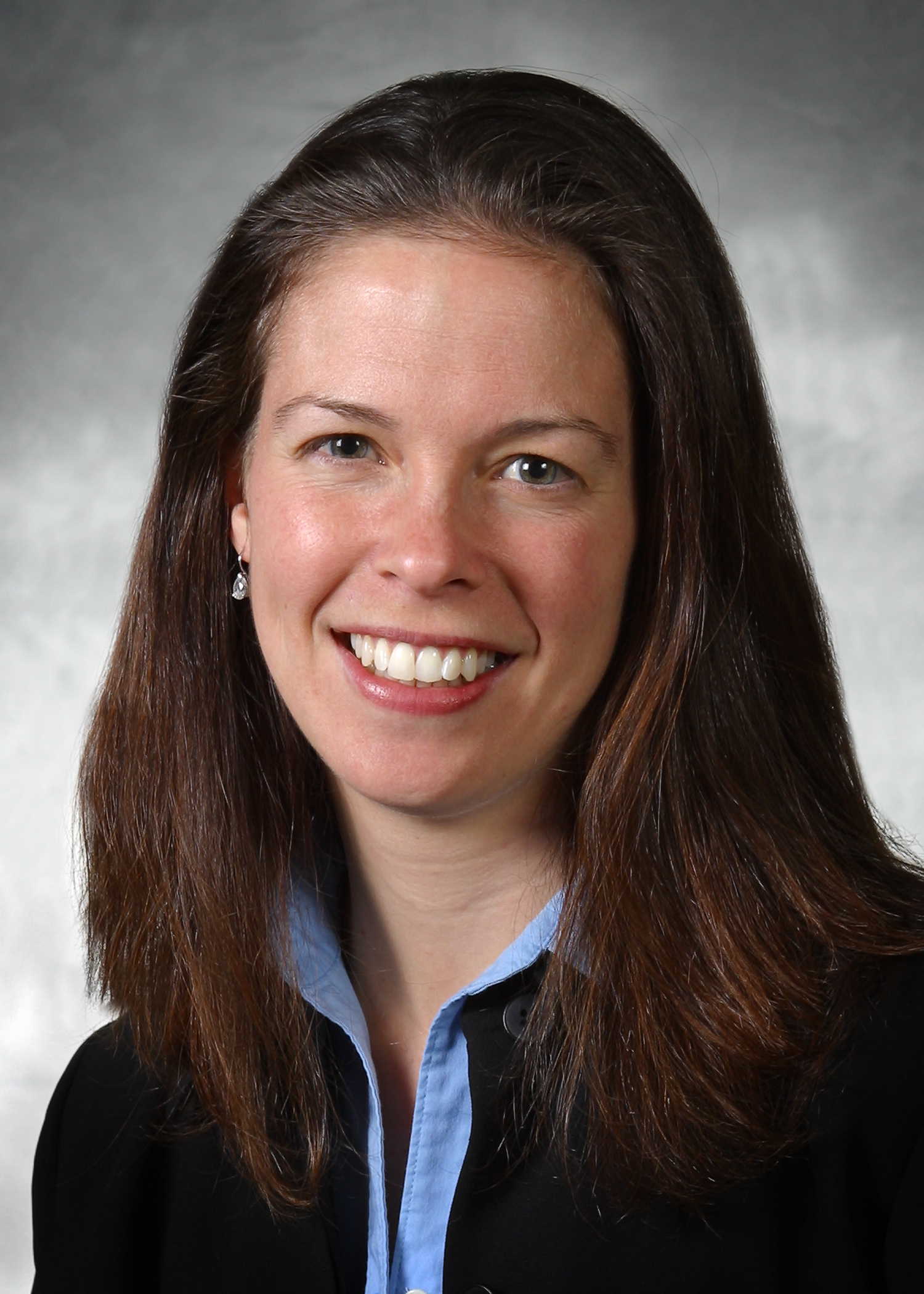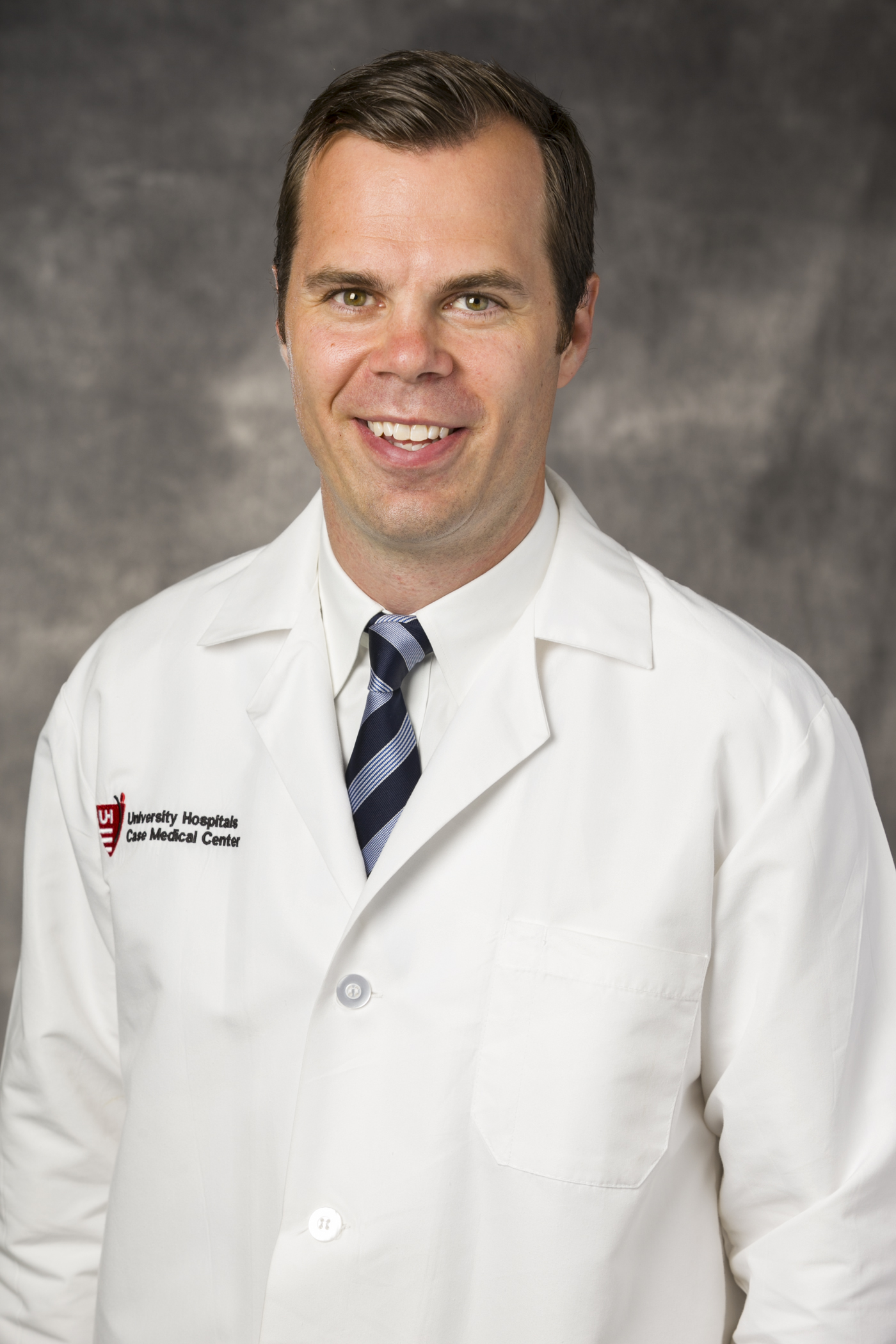ACL injury prevention and treatment
April 09, 2018

UH Sports Medicine develops ACL protocol to keep Ohio athletes healthy
Innovations in Orthopedics – Spring 2018
 Amanda Weiss Kelly, MD
Amanda Weiss Kelly, MD James Voos, MD
James Voos, MDAmanda Weiss Kelly, MD, Division Chief of Pediatric Sports Medicine at University Hospitals Rainbow Babies & Children’s Hospital, has noticed an increasing number of young athletes — some as young as 10 years old — with anterior cruciate ligament (ACL) tears. A recent study published in Pediatrics backs up her observation.
The study’s authors found a 2.3 percent annual increase in ACL tears in patients ages six to 18 over a 20-year period. Females experienced a higher frequency of tears up through age 17.1
Sports that involve jumping, cutting and pivoting, such as football, basketball and soccer, put athletes at an increased risk of ACL sprains and tears. Athletes can tear the ligament when they land incorrectly from a jump, change directions rapidly or stop suddenly.
Once considered an adults-only injury, the study notes that pediatric patients present with ACL tears with increasing frequency.
“It’s the most common surgery I perform,” says James Voos, MD, Interim Chairman, Department of Orthopaedic Surgery, Division Chief, UH Sports Medicine and Medical Director, UH Sports Medicine Institute, UH Cleveland Medical Center Head Team Physician, The Cleveland Browns. “Kids are taking up sports at earlier ages and often play year-round. Playing only one sport at a younger age also increases injury risk.”
PERSONALIZED TREATMENT AND PREVENTION
In response to this upward trend in ACL tears, UH Sports Medicine developed a three-prong approach to treat injuries and prevent reoccurrence.
- Outreach. You’ll find UH-sponsored athletic trainers in more than 40 Northeast Ohio high schools. They collaborate with team physicians and coaches to treat injuries, prevent reinjury and ensure a safe return to play.
- Surgery. UH Sports Medicine surgeons perform hundreds of ACL surgeries every year using minimally invasive techniques as often as possible. Surgeons consider all aspects of the patient – from their preferred sport to gender – to ensure the best possible outcome.
- Prehab and rehab. To help athletes get back in the game as soon as possible, UH Sports Medicine developed its own ACL recovery protocol. The program involves physical therapy, testing and evaluations to determine whether an athlete can safely return to play.
Physical therapy begins days to weeks before surgery. “Prehab” focuses on enhancing quadriceps strength and lower extremity function to ensure athletes can withstand surgery.
After surgery, patients work closely with a physical therapist to rebuild strength and range of motion.
“We spend the first three months working on neuromuscular training and getting back full range of motion,” says Christopher LeVan, MS, a physical therapist for UH Sports Medicine. “We get patients used to using that leg again as well as control pain and inflammation.”
Athletes continue to build strength and endurance through a home program. They return to UH at the six-month mark for more sports-specific training. It may take up to a year before an athlete is physically and mentally ready to return to competition.
Jump Start to Peak Performance
Another component of UH Sports Medicine’s ACL program aims to prevent injuries from happening in the first place. Called Jump Start, the prehab program involves a series of exercises to strengthen and stabilize the knee as well as develop overall strength, stamina and balance.
“We found when coaches incorporate the program into a workout, kids are more likely to continue,” Dr. Voos explains. “When you stop participating, your risk goes back up. So it’s very important to stick with the program.”
A typical Jump Start program lasts about 10 minutes and includes some or all of the following:
- Warmup: jogging across the field, side-to-side run, backward run
- Strength: walking lunges, toe raises, squats, burpees
- Plyometrics: lateral, forward/backward, and single-leg hops over a cone; vertical jumps
- Agility: runs with deceleration and pivots, bounding
“Jump training is not just about injury prevention,” Dr. Weiss Kelly says. “Jump training makes athletes faster and stronger and helps them jump higher, which is advantageous in all sports. Kids can replace the lame warmup with jump training.”
The program also includes instruction on technique. “When you land stiff-legged or knock-kneed, that’s the worst for the ACL,” Dr. Voos says. “We teach techniques so athletes land in a softer, safer position with knees in front.”
Studies have shown that females can significantly reduce ACL injury risk by incorporating a program such as Jump Start. Used consistently, this type of program can even out muscle imbalances and increase muscle reaction times, two weaknesses seen in female athletes. “Girls tend to land with their knees more in middle, putting their ACLs in more vulnerable position,” Dr. Weiss Kelly explains.
“We can’t change their age or gender, but we can change their ability to control their legs, knees, hips and their balance,” LeVan says.
With a commitment to innovation, new surgical techniques and comprehensive care, UH Sports Medicine plays a starring role in keeping Ohio athletes healthy. “Our physicians and athletic trainers work together, year-round, to take care of athletes,” Dr. Weiss Kelly says. “We’re deeply invested in local schools and tailor our programs for every sport, every class.”
To refer your patient to the UH Sports Medicine Institute, call 216-983-PLAY (7529).


